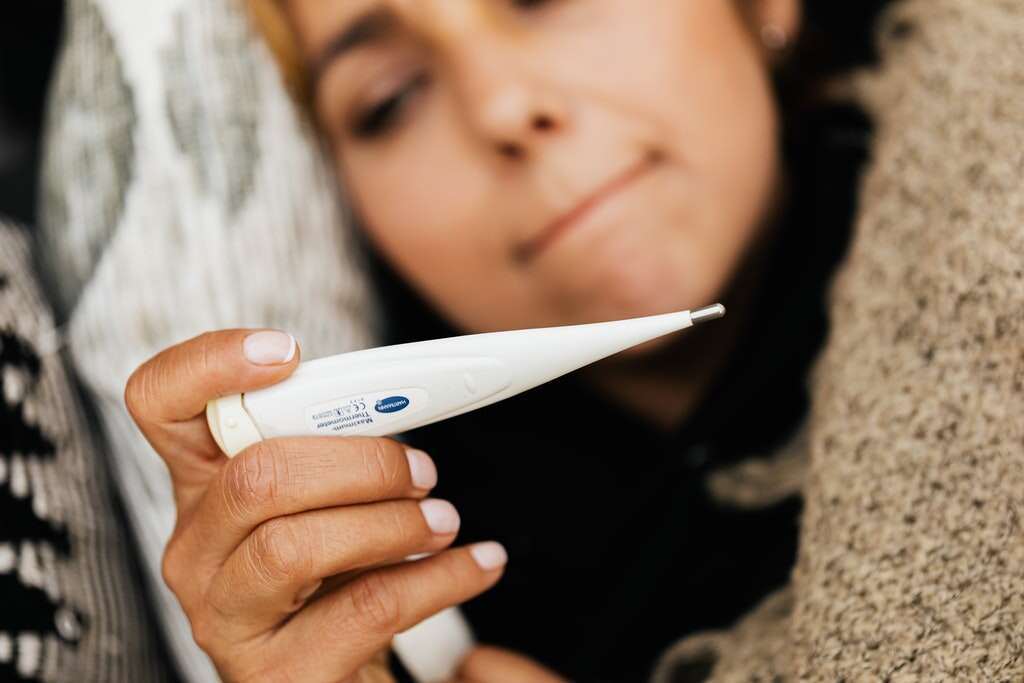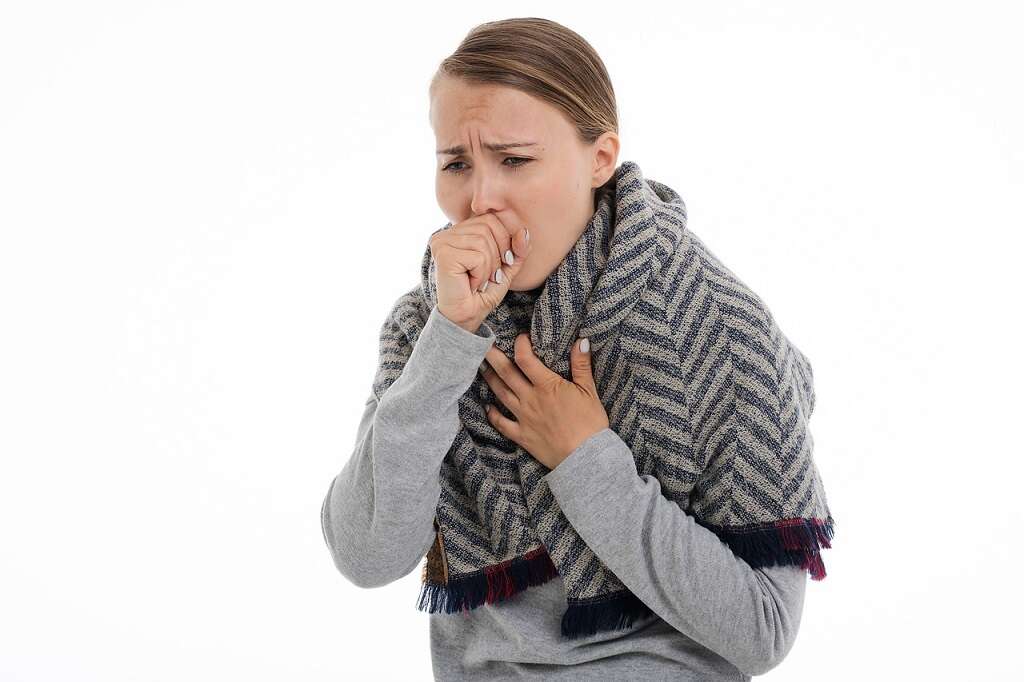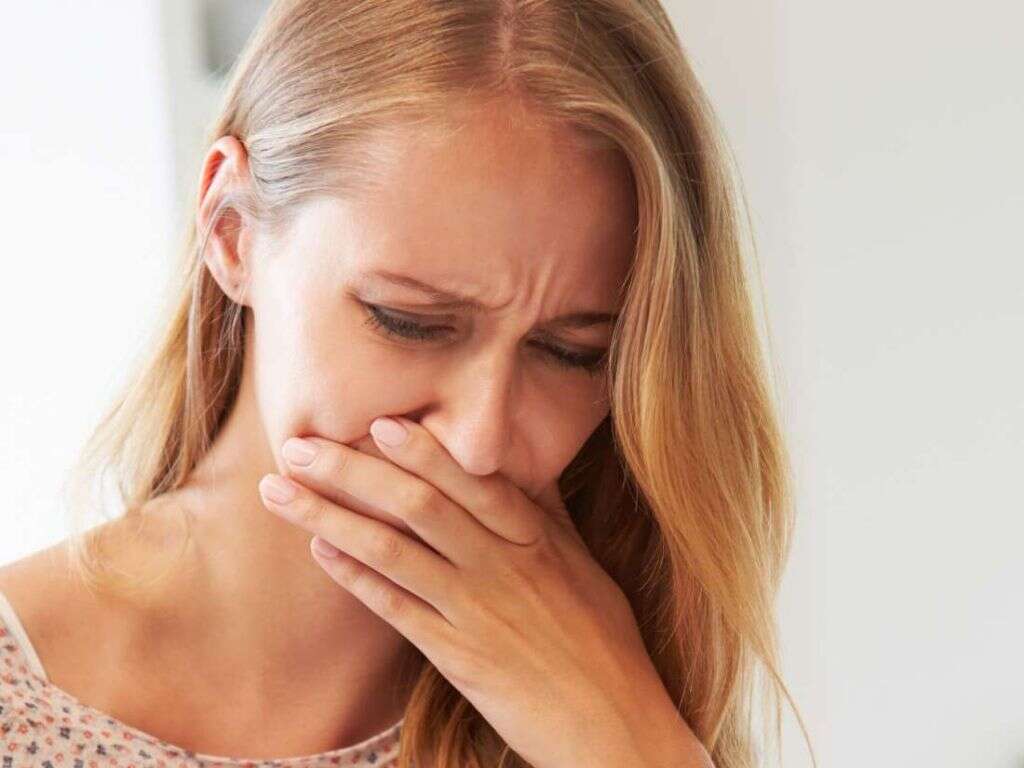10 Bacterial Infection Symptoms
 Article Sources
Article Sources
- 1. 'Bacterial Infections.' Sepsis Alliance, 12 Jan. 2021, www.sepsis.org/sepsisand/bacterial-infections
- 2. 'What Is Bacterial Vaginosis?: Symptoms, Signs and Causes.' Planned Parenthood, www.plannedparenthood.org/learn/health-and-wellness/vaginitis/what-bacterial-vaginosis
- 3. 'Fever.' Better Health Channel, www.betterhealth.vic.gov.au/health/conditionsandtreatments/fever#symptoms-of-fever
- 4. 'Chills: Causes & Treatment.' Cleveland Clinic, my.clevelandclinic.org/health/symptoms/21476-chills
- 5. 'Fatigue.' Healthdirect, www.healthdirect.gov.au/fatigue
- 6. 'Lymphadenitis.' Johns Hopkins Medicine, www.hopkinsmedicine.org/health/conditions-and-diseases/lymphadenitis
- 7. 'Staph Infections.' Mayo Clinic, Mayo Foundation for Medical Education and Research, 6 May 2020, www.mayoclinic.org/diseases-conditions/staph-infections/symptoms-causes/syc-20356221
- 8. 'Chest Infection.' NHS Inform, www.nhsinform.scot/illnesses-and-conditions/infections-and-poisoning/chest-infection
- 9. 'Endocarditis.' Mayo Clinic, Mayo Foundation for Medical Education and Research, 14 Nov. 2020, www.mayoclinic.org/diseases-conditions/endocarditis/symptoms-causes/syc-20352576
- 10. 'Urinary Tract Infections and Dementia.' Alzheimer's Society, 1 Apr. 2017, www.alzheimers.org.uk/get-support/daily-living/urinary-tract-infections-utis-dementia
Bacteria are single-cell microorganisms found virtually everywhere. Many bacteria are helpful, such as those in the digestive tract that aid in the digestive process and support the immune system. Others are harmful, and if they enter the body and proliferate, they cause bacterial infections, leading to multiple symptoms. Some of these infections may be life-threatening.
Bacteria enter the body in a number of ways. They may be inhaled, ingested while eating or drinking and they may invade through an opening in the skin, such as a cut. Sometimes the balance of beneficial bacteria normally present in the body becomes disturbed, leading to infections.1‘Bacterial Infections.’ Sepsis Alliance, 12 Jan. 2021, www.sepsis.org/sepsisand/bacterial-infections,2‘What Is Bacterial Vaginosis?: Symptoms, Signs and Causes.’ Planned Parenthood, www.plannedparenthood.org/learn/health-and-wellness/vaginitis/what-bacterial-vaginosis
Fever
A fever occurs when the body temperature is elevated, which indicates the body is fighting a viral or bacterial infection. The person feels hot and sweaty, and their skin may appear flushed. Over-the-counter medications may help lower a fever, and sponging the skin with lukewarm water may also bring relief.
Mild fevers commonly resolve on their own after a few days. If a fever persists, is over 103 degrees Fahrenheit or is accompanied by symptoms that include severe headache, confusion, or breathing difficulties, the person should seek medical evaluation immediately to determine if these symptoms are due to bacterial infection or other causes.3‘Fever.’ Better Health Channel, www.betterhealth.vic.gov.au/health/conditionsandtreatments/fever#symptoms-of-fever

Chills
Chills are another possible symptom of a bacterial infection, and they commonly occur when a person has a fever. They're a sign the body is attempting to regulate its temperature. A person with chills may shiver and have goosebumps, and their teeth may chatter.
Using layers of clothing or blankets and sipping hot beverages may help keep chills at bay. Once the underlying condition resolves, the chills commonly abate.4‘Chills: Causes & Treatment.’ Cleveland Clinic, my.clevelandclinic.org/health/symptoms/21476-chills

Pain or Discomfort
A person with a bacterial infection is likely to notice pain or discomfort in the location of the infection, due to increased inflammation. For example, a sinus infection may cause a headache, a bacterial joint infection may result in pain in the affected joint and bacterial pneumonia may cause chest pain.
A bacterial infection may also cause more generalized discomfort, with the person experiencing aches and pains throughout the body. The pain commonly occurs along with fever and chills.1‘Bacterial Infections.’ Sepsis Alliance, 12 Jan. 2021, www.sepsis.org/sepsisand/bacterial-infections

Fatigue
Fatigue, a feeling of exhaustion that interferes with a person's ability to carry out their normal activities, may be a symptom of a bacterial infection. It's also a common symptom of many other conditions.
A person with fatigue may feel extremely tired and find normal activities exhausting. They may lack motivation and find it difficult to concentrate and remember things. Fatigue may also result in poor hand-eye coordination, slowed reaction time and poor judgment.5‘Fatigue.’ Healthdirect, www.healthdirect.gov.au/fatigue

Swollen Lymph Nodes
Swollen lymph nodes may be a symptom of a bacterial infection. The lymph nodes, located throughout the body, contain white blood cells that help the body fight infection. When an infection develops, the lymph nodes closest to the infection may become enlarged and painful.
If the infection spreads, other lymph nodes may become swollen, possibly indicating an infection is spreading. Bacterial infections that spread to the lymph nodes may quickly affect other parts of the body, making prompt treatment critical.6‘Lymphadenitis.’ Johns Hopkins Medicine, www.hopkinsmedicine.org/health/conditions-and-diseases/lymphadenitis

Vaginal Discharge
A thin vaginal discharge with a fishy odor may be a sign of bacterial vaginosis. The discharge may be white, green or gray. This bacterial infection may arise when the normally present, healthy bacteria proliferate due to a pH imbalance in the vagina. Douching or using vaginal deodorants are possible causes of bacterial vaginosis.
Oral or intravaginal antibiotics address bacterial vaginosis. Probiotics may be helpful for managing recurring cases of this bacterial infection.2‘What Is Bacterial Vaginosis?: Symptoms, Signs and Causes.’ Planned Parenthood, www.plannedparenthood.org/learn/health-and-wellness/vaginitis/what-bacterial-vaginosis

Skin Symptoms
When bacteria enter the body through openings in the skin, such as cuts or insect bites, bacterial infections may develop. Some infections may cause skin inflammation, pain, redness and swelling. Others may cause rashes, boils or blisters. These skin lesions may be filled with pus.
While antibiotics may be effective in treating these bacterial infection symptoms, preventive measures may help people avoid infection. Frequent, thorough handwashing, keeping lesions clean and covered and avoiding sharing personal items may help prevent bacterial skin infections.7‘Staph Infections.’ Mayo Clinic, Mayo Foundation for Medical Education and Research, 6 May 2020, www.mayoclinic.org/diseases-conditions/staph-infections/symptoms-causes/syc-20356221

Cough
A persistent cough may be a symptom of a bacterial infection affecting the respiratory tract. The cough may produce phlegm. Bacterial respiratory infections include pneumonia, whooping cough and bronchitis. Some of these conditions may be caused by viruses instead of bacteria.
Doctors may prescribe antibiotic treatment for bacterial infections, but it's possible for these infections to resolve on their own. Drinking plenty of fluids to loosen mucus, elevating the head while sleeping to ease breathing and using a humidifier may help alleviate coughing.8‘Chest Infection.’ NHS Inform, www.nhsinform.scot/illnesses-and-conditions/infections-and-poisoning/chest-infection

Shortness of Breath
Another bacterial infection symptom is shortness of breath. This symptom may develop with respiratory infections, but it can also arise if a bacterial infection causes endocarditis, inflammation in the lining of the heart's valves and chambers. Other symptoms of endocarditis may include chest pain when breathing, fatigue and swelling of the feet, legs or abdomen.
Without prompt treatment, the heart function may become impaired. Antibiotics may treat bacterial endocarditis, but surgery may be necessary to repair or replace damaged heart valves.9‘Endocarditis.’ Mayo Clinic, Mayo Foundation for Medical Education and Research, 14 Nov. 2020, www.mayoclinic.org/diseases-conditions/endocarditis/symptoms-causes/syc-20352576

Behavioral Changes and UTIs
Sudden, unexplained behavior changes and decreased alertness may be symptoms of a bacterial infection, especially in older adults with dementia. In fact, this is sometimes the first indication that a person has a bacterial infection.
A urinary tract infection or UTI is one bacterial infection that may precipitate behavioral changes. Bacteria entering the urinary tract through the urethra cause UTIs. Other symptoms may include a frequent, urgent need to urinate, burning upon urination, fever and cloudy or bloody urine. Antibiotics successfully treat UTIs.1‘Bacterial Infections.’ Sepsis Alliance, 12 Jan. 2021, www.sepsis.org/sepsisand/bacterial-infections,10‘Urinary Tract Infections and Dementia.’ Alzheimer’s Society, 1 Apr. 2017, www.alzheimers.org.uk/get-support/daily-living/urinary-tract-infections-utis-dementia











